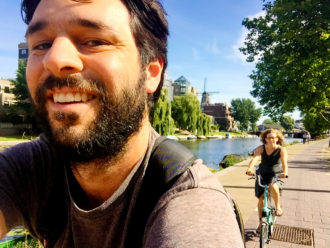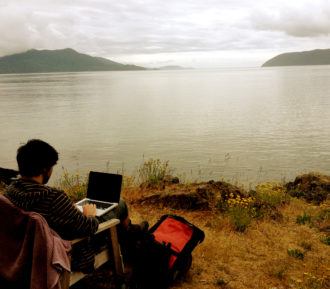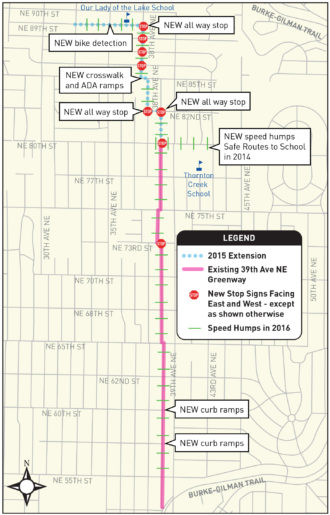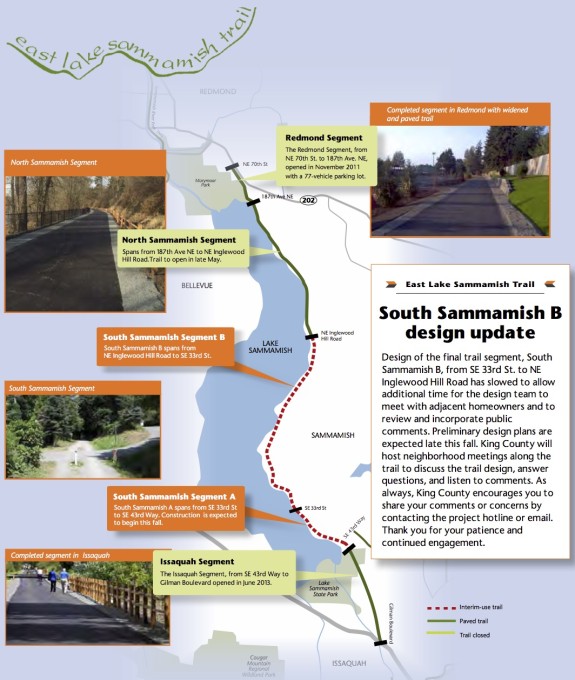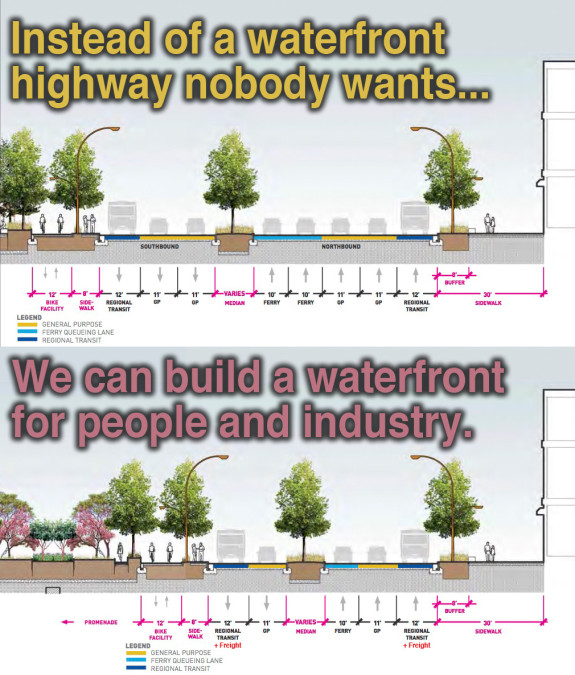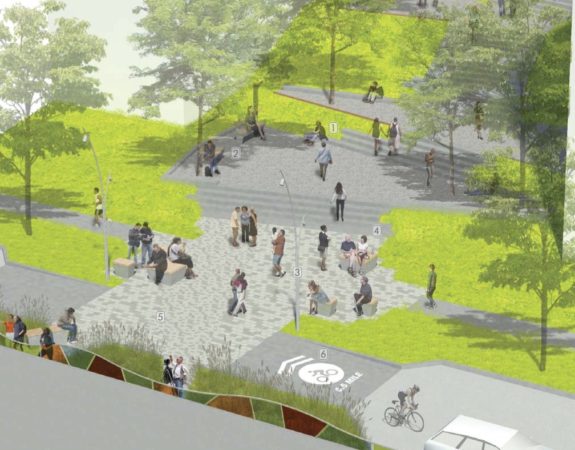 Seattle Bike Blog Editor Tom Fucoloro has Gone Bikin’ until Labor Day. In the meantime, we will be periodically posting short news bits and excerpts from good reads floating around the web.
Seattle Bike Blog Editor Tom Fucoloro has Gone Bikin’ until Labor Day. In the meantime, we will be periodically posting short news bits and excerpts from good reads floating around the web.
We have been fully against the state’s horrendous plans for a surface highway on the reconstructed downtown Seattle waterfront ever since the agency dropped its first looks.
It is still horrible. There are simply too many lanes of traffic, leading to very long crossing distances and creating dangerous and likely deadly conditions for people moving between the downtown core and the newly-rebuilt waterfront.
The state needs to drop one of the general purpose lanes in each direction. They are already digging a highway tunnel at immense (and growing) cost. We don’t need or want a surface highway to complement it.
Josh Cohen dives into the issue in a recent story for Next City:
“When you get to south of Columbia you still have an eight-lane highway,” says Quinn. “The waterfront is a transportation hub for people walking. We’re the most vulnerable. But we’re not being prioritized, we’re being compromised.”
Part of the problem stems from the many, many competing needs of the major north-south corridor. As Quinn says, there is significant foot traffic from tourists, ferry riders, bus riders and residents. There is bike traffic. There will be heavy car traffic from drivers getting off the ferry and people heading into downtown since the highway tunnel will bypass downtown. Alaskan is an important route for freight traffic coming out of the port. And the ferry uses space on the road to queue its car traffic.
“There’s so much trying to happen in a constrained space it does have a very practical challenge in terms of the width of that road,” says Marshall Foster, director of Seattle’s Office of the Waterfront. “We’re trying to strike this very, very hard balance. But without throwing someone off the island — transit or ferries or something else — this is the optimized solution that’s going to make everybody be able to do what they have to do.”
Compelled by feedback from constituents (including a set of strongly worded letters co-signed by Feet First, Transportation Choices Coalition and Cascade Bicycle Club), the city looked at alternative designs that could narrow the road width. But Foster says freight capacity and ferry queuing lanes weren’t up for negotiation, and projected traffic volumes will require two general travel lanes in each direction. So dedicated transit lanes were the only thing on the chopping block, an outcome nobody wanted.
But the plan does “throw someone off the island.” That’s what we’re saying. The plan is not safe or comfortable for people on the ground. Or to phrase that another way: “Projected safety and public comfort needs will require fewer lanes in each direction.”
Vision Zero says that deaths and serious injuries are preventable, buy only if cities and states make safety the top priority in their street designs. If you compromise safety, then you are contributing to death and injury. Stop.
It seems the bureaucratic, public feedback route isn’t working here. They aren’t listening. Is it time to start planning protests?

